The sun is your skin’s arch nemesis. Without proper protection, the sun can break down the collagen and elastin that keep skin firm. The sun’s rays can also sap moisture, slow cell regeneration, and cause hyperpigmentation. And, of course, there’s the risk of skin cancer.
Skin damage from sun exposure, sometimes referred to as “photoaging,” isn’t always visible, but most visible signs of aging can be traced to sun damage. While it’s not possible to totally reverse sun damage, there are skincare treatments that can help you look your best by replenishing your body’s collagen and elastin, evening out skin tone, and jump-starting cell turnover.
Your number one defense against sun damage is using sunscreen (SPF 30+) every day. And don’t let those clouds fool you — the sun can still cause skin damage even on the most overcast days.

Understanding Sun Damage to Skin
The sun can damage your skin in seemingly endless ways, from causing wrinkles and unattractive sunspots to damaging your DNA. Understanding how the sun can damage your skin will help you stay vigilant with your sun protection, identify potential concerns, and treat signs of photoaging.
Visible Signs of Sun Damage + Premature Aging
Sun damage isn’t always noticeable right away. Photoaging starts within the deeper layers of the skin and becomes visible as you get older. It’s possible (and statistically quite likely) that your skin has sun damage even if you can’t see it yet. The effects become visible as you age, leading to premature signs of aging.
Common signs of aging caused by sun damage:
- Wrinkles and fine lines
- Drooping skin
- Thin or translucent skin
- Age spots
- Dry, rough texture
- Actinic keratosis (precancerous growth)
- Broken capillaries
Sun Damage You Can’t See
Most people associate the visible redness of a sunburn with sun damage, but some of the most destructive photoaging happens deep within the skin where it’s invisible to the naked eye. UV rays, a form of radiation, can break down essential proteins in the skin, eventually leading to wrinkles and sagging skin. The sun’s rays can also cause oxidative stress, leading to cellular damage and increasing skin cancer risk.
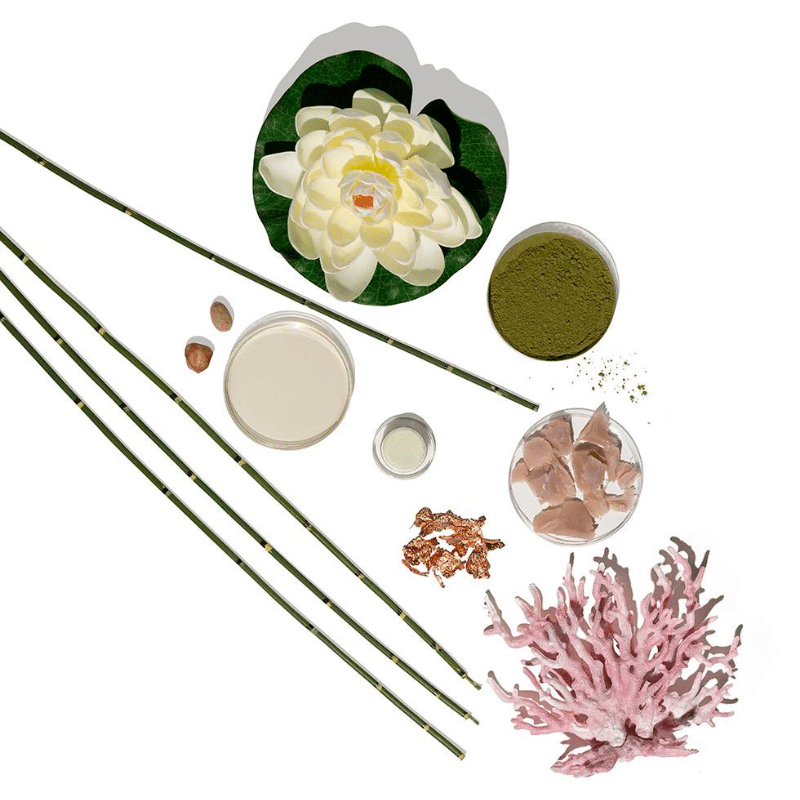
How to Treat Sun-Damaged Skin
There are skincare treatments available that can help sun-damaged skin. For example, Geneo Detox treats and protects the skin to shield it from environmental factors such as UV rays. However, the best plan of attack against photoging is prevention. The best ways to maintain healthy, beautiful skin are to wear protective clothing, apply SPF 30+ sunscreen daily (and reapply often), and avoid times of day when UV rays are strongest.
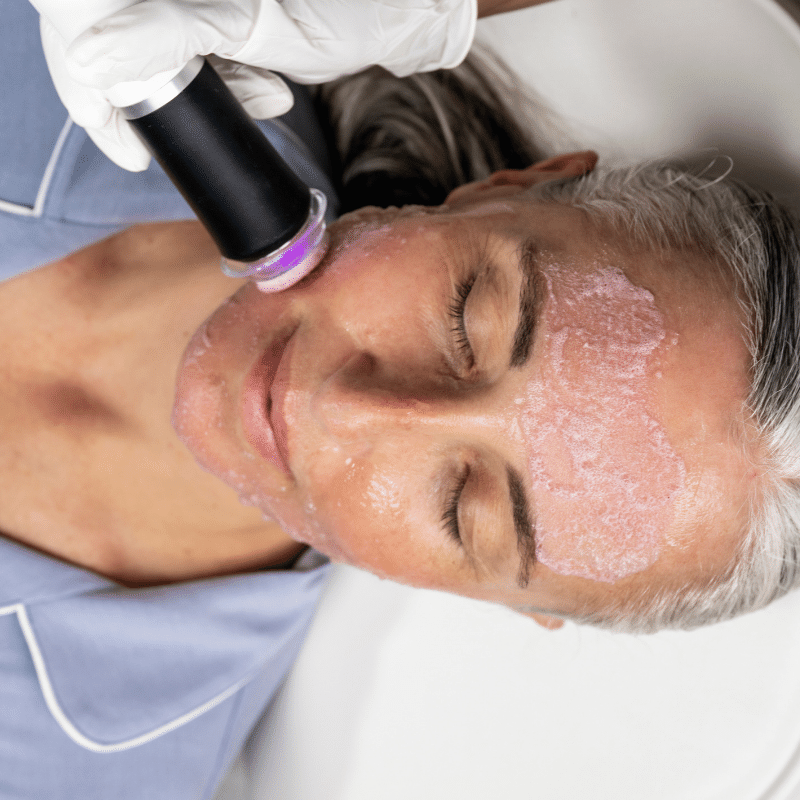
Wrinkles, Drooping, and Loss of Skin Elasticity
Unprotected sun exposure can cause wrinkles, drooping skin, and loss of elasticity by damaging your skin’s proteins, which are essential for smooth, taut skin. The best way to fight this type of sun damage is to use treatments that promote new collagen and elastin production. There are several ways to do this, including:
- Ultrasound
- Radio frequencies
- Laser treatments
- Retinoid or peptide creams
- Microdermabrasion
You can also counteract wrinkles and drooping skin with dermal fillers, which artificially plump the skin for six to 12 months.
Most Effective Ingredients
Here are some of the most effective ingredients for treating loss of elasticity and wrinkles:
- Azelaic acid fights oxidative stress
- Antioxidants such as niacinamide, vitamin C, and beta-carotene help your skin cells repair themselves and stave off oxidative stress that can damage DNA
- Collagen boosters like retinoids and alpha hydroxy acids exfoliate skin and encourage cell regeneration and collagen production
You can find these ingredients in many skincare creams and serums that you can use at home. You can also incorporate antioxidants into your diet by eating more fruits and vegetables or taking a dietary supplement.
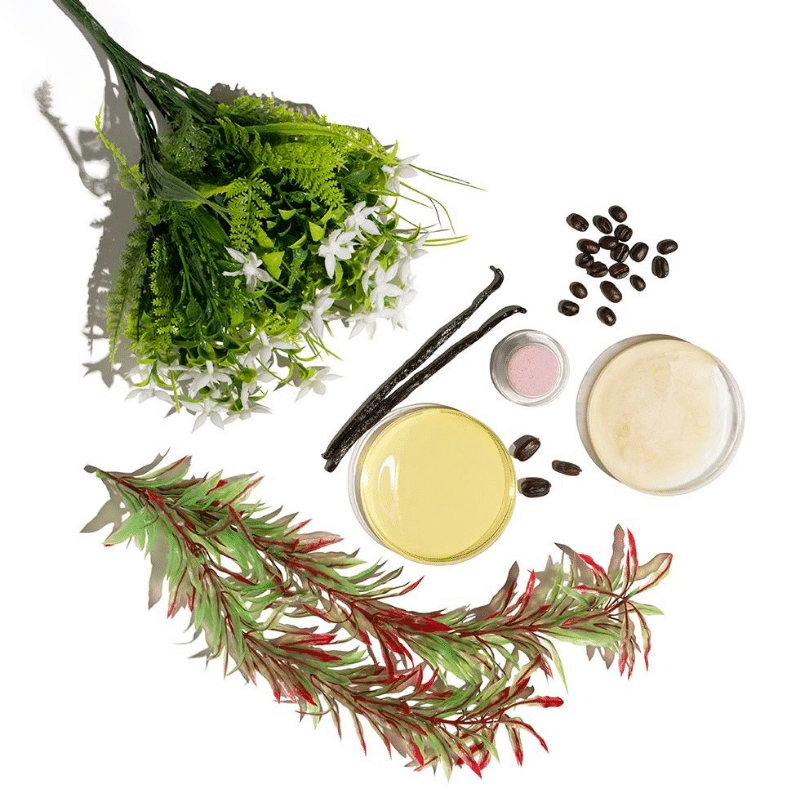
Best Professional Treatments
Some of the most popular professional treatments for photoaging are chemical peels, dermal fillers, ultrasound, and facials with targeted ingredients.
Geneo Revive is an excellent treatment option for wrinkles and sagging skin. It improves the skin’s elasticity and visibly reduces and inhibits the signs of aging, including fine lines and wrinkles.
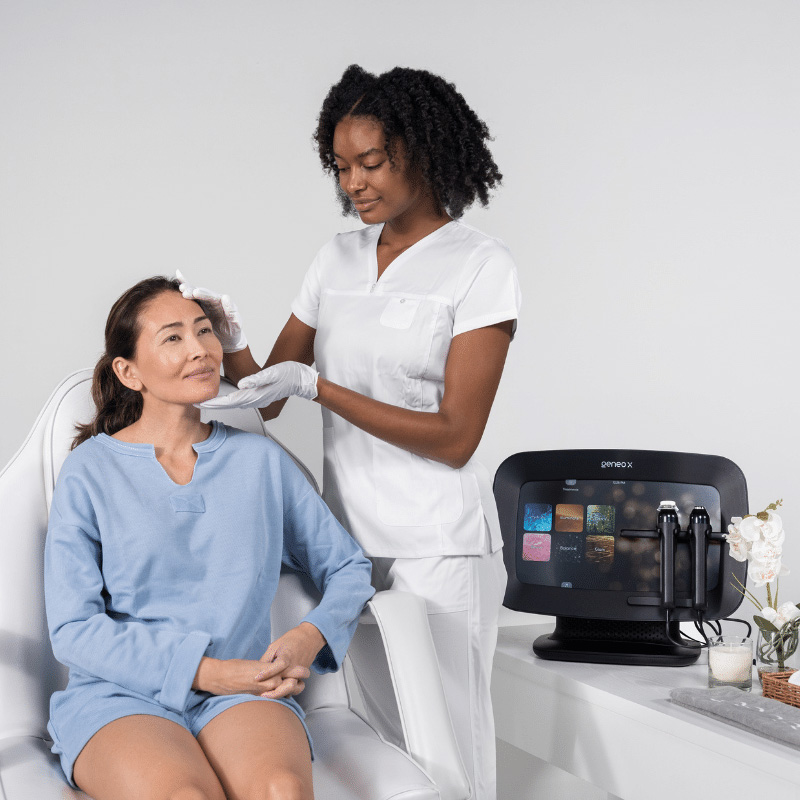
Translucent and Thinning Skin
Skin naturally becomes thinner and more translucent as you age, but sun damage speeds this process up considerably by damaging skin cells. There’s no way to reverse thin skin, but you can protect it from further damage.
Thin skin is prone to bruising and irritation, and one of the best ways to prevent this is by keeping the skin hydrated and moisturized. Drink approximately two liters of water each day to keep your body hydrated. You can also apply moisturizer and hyaluronic acid to the skin, both of which help make skin more flexible and less prone to damage.
Most Effective Ingredients
Include the ingredients below in your home skincare routine and seek them out when choosing professional treatments.
- Vitamin C: Has been shown to inhibit bruising
- Arnica: Helps bruises heal faster
- Hyaluronic acid: Hydrates the skin to protect it from damage
- Ceramides: Supports the skin barrier to help keep in moisture
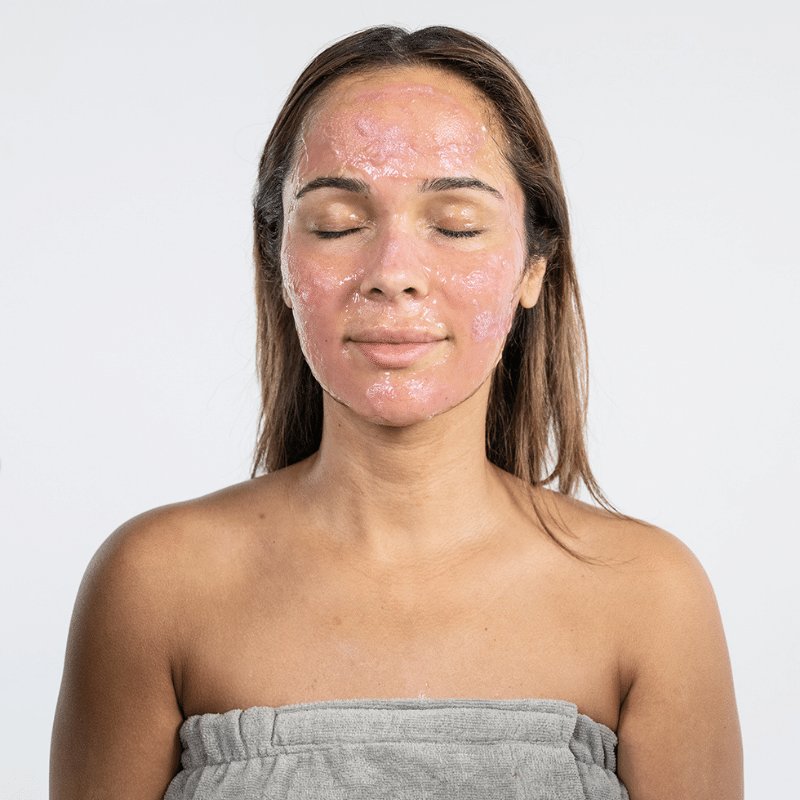
Best Professional Treatments
The right professional treatments can still help your skin look its best despite thinning. Treatments that focus on collagen-boosting ingredients and technologies help bring some firmness back to the skin. Geneo Revive uses all-natural ingredients, ultrasound technology, and facial massage to improve your skin’s texture and overall appearance.

Hyperpigmentation, Dark Spots, Liver Spots, and Age Spots
Hyperpigmentation (also known as liver spots or age spots) appears as dark spots on the skin. It’s caused by the production of melanin, which your skin creates in response to sun exposure. Many at-home and professional treatments are available to help lighten these darker areas.
Most Effective Ingredients
- Hydroquinone is one of the most effective ingredients in skin-lightening creams. It reduces melanocytes, a type of cell that creates skin-darkening melanin. It’s available in a 2% concentration in over-the-counter products and up to 4% from dermatologists.
- Kojic and glycolic acids fade dark spots by exfoliating the skin and encouraging new, unpigmented cells to the surface.
- Retinoids also fade dark spots by increasing cell regeneration.
These ingredients are available as cream-based treatments that you can add to your home skincare routine. To get more potent versions of these ingredients, book a facial treatment at a spa or skincare clinic.
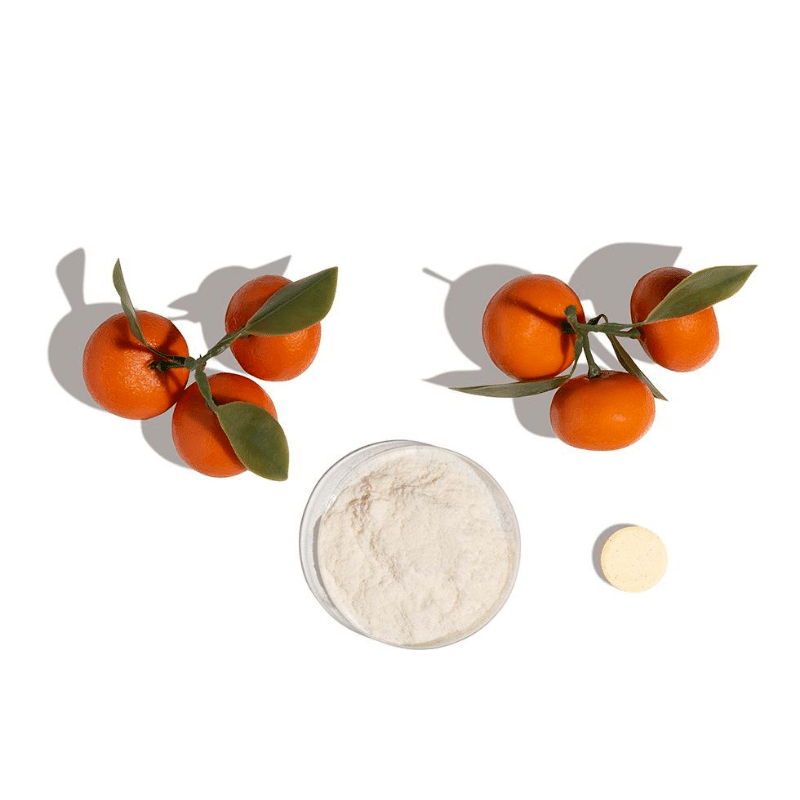
Best Professional Treatments
Some of the most popular professional treatments for hyperpigmentation are:
- Dermabrasion
- Chemical peels
- Laser skin resurfacing
- Cryotherapy
These treatments all focus on removing or damaging the top layers of skin to promote healing. As the skin heals, the hyperpigmented skin cells are replaced by fresh cells with little or no pigmentation. This helps lighten dark spots and even out skin tone over time.
Geneo takes a gentler approach with the Geneo Illuminate treatment. It promotes skin regeneration through antioxidants and alpha hydroxy acids, unifying skin tone, improving pigmentation, and rejuvenating your skin for a smoother complexion.
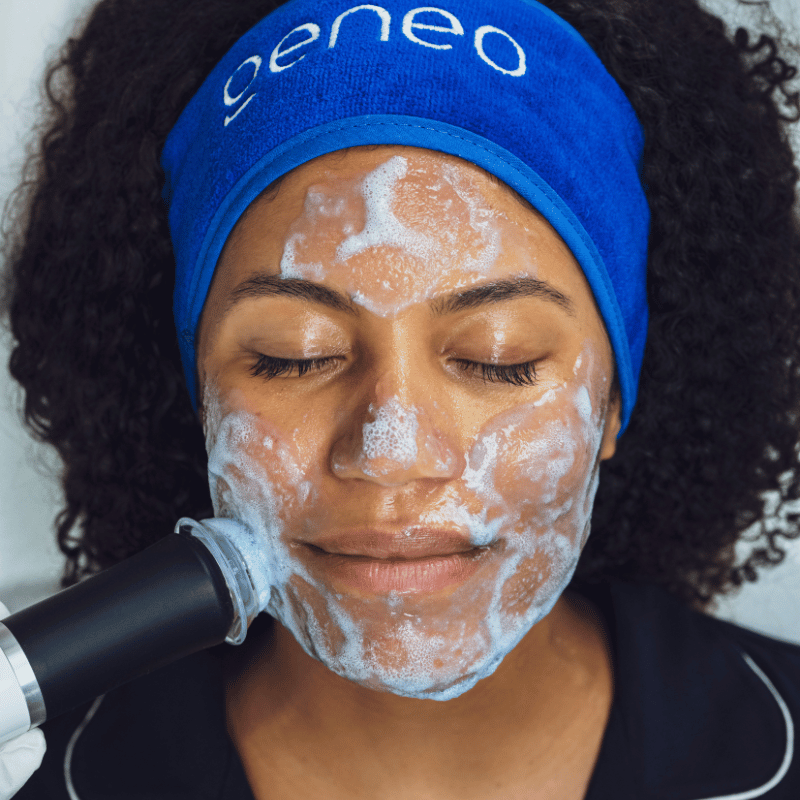
Gentle, Effective Treatment for Sun-Damaged Skin
Sun damage may seem inescapable, but daily use of sunscreen and protective clothing goes a long way toward reducing the accumulative effects of photoaging. You can improve existing sun damage and signs of aging with at-home and professional skincare treatments.
Geneo’s all-natural, gentle facial treatments can protect your skin and proactively address signs of aging. Geneo uses highly effective ingredients to reduce and prevent damage caused by the sun and other environmental stressors, all without any invasive procedures or downtime.
Ready to boost your skin’s protection against premature aging? Find a Geneo provider near you to book your first treatment!
Are you a skincare professional looking to offer Geneo’s in-demand treatments to clients? Learn more about becoming a Geneo provider.



